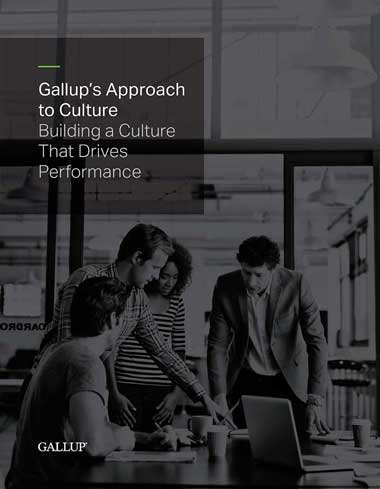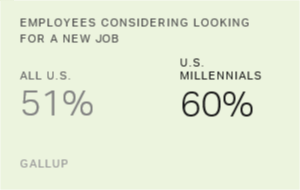Story Highlights
- The SOP is important, but it doesn't set you apart or delight customers
- A service brand promise is based on brand essence, drivers and values
- Define specific service values and behaviors so you can train and coach to them
The Standard Operating Procedure (SOP) is intended to make things simple for service employees. The SOP leaves nothing to chance. The SOP ensures compliance to service standards and prevents mistakes.
But if the SOP stifles spontaneous interactions, it can also prevent engagement. Personal, emotional connections between service people and customers are memorable, differentiating, and these moments are how brand promises come to life -- they engage. If the SOP is a barrier instead of a map, it will preclude the employee behaviors that engage customers.
And customer engagement is a much-needed advantage in the saturated service market. Engaged customers spend more with you, choose you over your competitors and tell others about you. In fact, Gallup research finds that engaged customers represent a 23% premium in terms of share of wallet, profitability, revenue and relationship growth over the average customer.
The SOP ensures compliance to service standards and prevents mistakes. But if the SOP stifles spontaneous interactions, it can also prevent engagement.
A customer's sense of engagement is a result of the fulfillment of three discrete emotional needs -- pride, passion and confidence.
To meet those needs and impact the customers' emotional engagement, service brands must allow employees to create personal connections with customers that realize the brand promise. But to execute on the brand promise, the employee must know what that brand promise is.
Most don't.
Gallup finds that only 41% of employees agree they "know what my organization stands for, and what makes our brand different from our competitors." Only 23% say they can apply their company's values to their work every day.
In fairness to those employees, many companies have poorly defined brand promises. And in fairness to companies, developing an actionable brand promise is hard.
The SOP should support the brand promise. Not replace it.
Creating a strong brand promise and service model requires objective analysis of your brand essence, positioning and value proposition. You need to know which qualities distinguish your brand from your competitors, what your brand stands for, what makes your products or services different, and why you're worthy of being chosen.
Furthermore, your promise must be consistent for customers throughout multiple service touchpoints -- human, digital and any communications they receive from your company.
When working with companies in the service industry, Gallup recommends building your brand promise on three levels:
- Brand Essence: What's your purpose? What do you stand for? Why does your brand exist?
- Brand Drivers: What is your value proposition? What are the specific properties that represent your brand? How is your brand seen?
- Service Values: What is your differentiator? How do you deliver on customer experiences in ways that are consistent with your brand promise?
Once your brand promise becomes actionable -- and your service values are communicated -- then your employees can begin portraying your brand promise and values, creating memorable, meaningful experiences for customers.
World-class service companies bring their values to life.
World-class service companies are very serious about their values -- the Ritz-Carlton prints their 12 service values on cards that all employees keep in their pockets -- because values are fundamental to the curated customer experiences that differentiate the brand and fulfill its promise.
Your company should do the same, in your own way, using your own service model. Start by listening to customers, managers, team members and partners to determine best practices. Identify what customers value most and what causes the most friction and distracts from their experience.
You might find your SOP needs updating -- after all, there are good reasons for service basics -- to meet the needs of a changing market.
But the SOP should serve the brand promise. So, make sure your employees know what your brand promise is, unlike the mystified majority, and align that promise with the expression of your service values. And the definition of that promise should be consistent from the C-suite to the front line.
Everyone needs to understand what a genuine service touchpoint is and how service values influence customers emotionally.
Then manage, train and coach to customer engagement, so that your brand's service model can finish what your SOP starts.
A customer's sense of engagement is a result of the fulfillment of three discrete emotional needs -- pride, passion and confidence. Only the employees who talk to your customers all day can provide that.
The Walt Disney Company is a master of the brand service model. Since 1955, a set of "four key keys to a great guest experience" have evolved at Disney: safety, courtesy, show and efficiency (formerly capacity).
While these might seem simplistic and perhaps not even differentiated, each key is supported by very specific service behaviors.
"Show," for example, encourages a specific behavior -- "I stay in character and perform my role in the show." That service model inspires the Princess Jasmine cast member to stay in character in front of her adoring fans.
But she has the freedom to decide what that performance should be for each individual fan.
Yes, Disney has very strict SOPs -- one is that all cast and crew, irrespective of who they are, must always pick up trash and litter if they see it -- but the brand service model exists alongside it. The SOPs support the brand service model. The SOPs don't replace it.
And that's the key. SOPs do serve a purpose -- they're a must-do list for health, legal and safety protocols -- but they're not the optimal delivery system for the brand promise and values.
A far more effective approach -- and far more likely to boost profitability, customer loyalty and even employee engagement -- is to give people the freedom to demonstrate your service brand essence, drivers and values as they see fit in the moment.
The SOP keeps the basics on track; all service companies need to deliver on those. But customers don't rave about basic experiences to their friends. They talk about the special, meaningful and personalized.
If your employees know what makes your brand special, and embody it in their own way for customers, the SOP will stay in the backdrop of the customer experience -- not become the experience itself.
Gallup can help you create a company culture that delivers on your brand promise:
- Download Gallup's perspective on building a company culture that enhances your brand.
- Learn how we can help you connect your customers to your brand by delivering what they want.
- Work with us to assess your current company culture and create alignment to get results.




